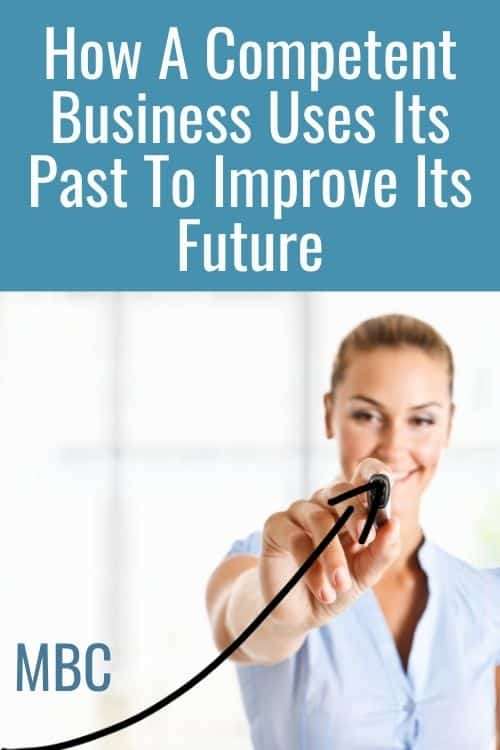A competent business uses its past to improve its future. What does this mean?
From the first day of opening an operation (perhaps even before in the planning stage,) a business enterprise should be learning what works, what doesn’t, and testing what might.
Your frame of reference grows as your business increases in age. In the early days, each day will be important.
As you grow, your metric will become weekly performance, monthly performance, yearly performance.
A good business pays attention to it all. They use this information to ensure they can predict the future.
One of the best ways to improve your business future is investing in the right people.

If you skipped out on your hiring process in the past, it’s time to do it right in the years to come. For example, you may not have had a Craft CMS Developer in the past, but in the future things could be entirely different for your business.
Future-proofing is so important so that you can learn from past mistakes and do better next time.
You shouldn’t be afraid to ask questions and do it right in your business and part of that will be in protecting your future as much as possible.
This will help guide them in several ways. It’s hard not to find some form of enjoyment in this process, as becoming more effective and productive is always pleasant to see – especially if you’re the one who has generated it.
But how can a business put these efforts into practice? Is there a given formula?
Or must they simply see what works, and try to use their best judgement? Well, there are a few methods that are worth implementing and thinking about in advance. Here they are:
Purchasing Habits
From the very first sale your company makes, you should begin to analyze purchasing habits.
While they may be quite humble in the first few weeks or months, they may still form a pattern.
Purchasing habits help you identify the demographics you’re reaching, when and where purchases are being made from, and if any are reliable.
Purchasing habits can tell you how different promotional campaigns are working.
For example, let’s say you’ve invested heavily in a social media marketing campaign targeted males aged 25-35.
However, by using web analytics, you’ve noticed that a surge in purchasing engagement has come from women aged 40-50, all made up of new customers.
This can tell you many things, sometimes alternate stories. It could be that your marketing campaign has more reach than you expected.
It might be that your product campaign has resonated with mothers more than their sons. You may just have misread your target audience entirely. Purchasing habits help any business.
From their origin, their amount, their repeated nature to what promotions stick, a competent business uses purchasing habits as a holy guide.
However, it shouldn’t be considered the ultimate guide. Sometimes resting on regular custom can prevent you from taking risks, and that can stifle a business as much as help it.
Remember, a customer doesn’t always know what they want. It’s up to you to innovate and help them realize.
Feedback
Listening to customer feedback is as essential as it always was. While you must never take it as a strict guide, an informed opinion can truly help you guide yourself clear when struggling for inspiration, ideas, or looking to improve.
Customers have a lot to say. They will have no qualms about telling you this, no matter if you ask them willingly or not.
While some feedback can be brushed off, some might be best considered, especially if many, many of the same points are raised in tandem.
Consider your forms of feedback. Sending out a thoughtful email on your mailing list could be a superior option to social media.
Users have to willingly sign up for your mailing list, and will often reply with thoughtful, long form responses if they care enough to receive your request in the first place.
You might encourage a response by offering promotional material. While this sounds like bribery, of course it shouldn’t be.
You should ask for two positive and two negative feedback items to keep matters fair.
This could be considered a much better and open responsive test than using Twitter or another social media platform for answers, as we all know they can be the playground for… those not looking to contribute intelligently to a conversation.
To put matters simply, listening to your audience matters, but only when filtered through context, reliability and encouraged honesty.
While you may not make major design decisions thanks to this, you can always become a better business by taking part.
At the very least, a customer will feel as though you care about their opinion, and that can serve as a form of marketing in itself.
Machine Learning
We are truly living in an age of technological marvels. Many people only see this milestone via the CGI in movies, the types of cars on the road, or the hollywood-esque video games they play.
However, the true technological marvels lay just under the surface, and they truly are revolutionary.
This is where machine learning comes in. Machine learning systems often predictive and forecasting abilities to help recommend courses of action in many different fields.
From staff management to cash flow, machine learning helps you parse the necessary statistics and generate a report you’re likely to experience if things continue as they are, if things downturn or improve.
With the right consulting firm for machine learning you can calibrate this software to your advantage and the specifics of your operation, giving you a long-form potential of true growth and ability.
While competent businesses use their past to determine their future, they can also use the developments of the present to analyze the past and work towards an even better future. Confused yet? Perhaps a machine could help you understand.
Staff
Staff are not statistics, although their output could be read as that. Staff are a golden resource, and they require an understanding eye in order to consider future behavioural output.
For example, you may find that staff who are known for taking extended illness breaks may not be your first choice for your future promotion, whereas someone who has shown the skills you admire may be considered first choice for hiring internally.
Predicting working issues of the past, logistical human resource management failings that have happened among other things can help you calibrate your staff management efforts for the future, enabling you to function as the best manager in the game.
With these simple tips, you will become that competence business using its past to determine its future.
- This post has been written for Morning Business Chat by an outside source



